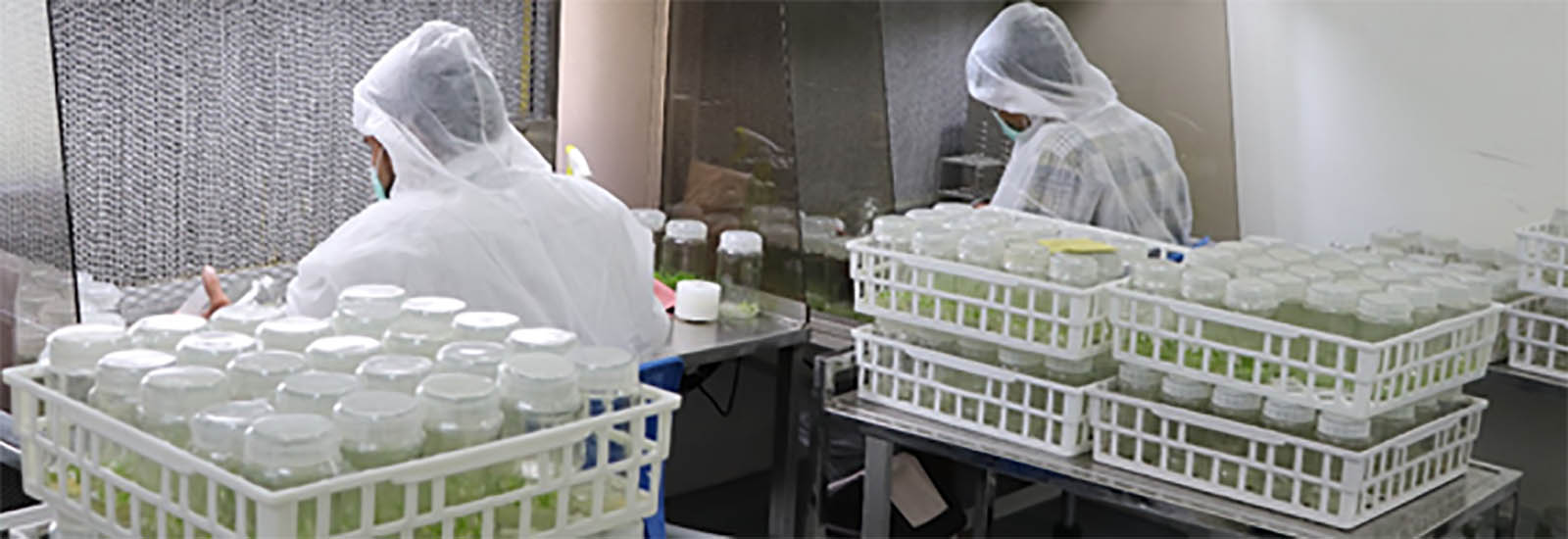
MICROPROPOGATION AND MICROGRAFTING SERVICE – ON CONTRACT BASIS
Institute has state-of-the-art Plant Tissue culture facility which is being utilized for micro-propagation, micrografting and related areas.
We having spacious 3 culture room with a capacity to store more than 10,000 culture bottles in racks, and hardening unit. This facility is equipped with 3 autoclave, 7 laminar air flow, 15 culture racks, orbital shaker and bioreactor (to carry out secondary metabolite works). We also having hardening unit to establish complete plants to adopt the natural conditions from laboratory.
We do micropropagation and micrografting on horticulture crops on contract basis. We have the considerable dexterity and specific skills.
For Contract on micrografting or micropropogation on your crop-of-interest, collaborate with us.
Contact us on enquiry@iht.edu.in to know more
Micropropagation is an advanced vegetative propagation technique. This method helps in getting disease-free plants in very little time.
The Micropropagation technique allows the production of large numbers of plants from small pieces of the stock plant in relatively short periods of time. Depending on the, the original tissue piece may be taken from shoot tip, leaf, lateral bud, stem or root tissue. In some cases, the original plant is not destroyed in the process – a factor of considerable importance to the rare or unusual plant. Once the plant is placed in tissue culture medium, proliferation of lateral buds and adventitious shoots or the differentiation of shoots directly from callus, results in tremendous increases in the number of shoots available for rooting. Rooted microcuttings or plantlets of many species have been established in production situations and have been successfully grown on either in containers or in field plantings.
Micrografting is a technique to develop plant free from disease, virus, graft-transmissible disease and resistant to soil borne disease.
The plants developed through grafting are composed of two parts:
- The scion, which is the above ground portion of the tree that produces the fruit. It is known for its sweet taste and for being high in demand both in local and foreign markets.
- The rootstock, which comprises the root system and the lower portion of the trunk. It possess an extraordinarily hardy root system, which enables the plant to withstand unfavourable soil conditions and resist soil borne and foot rot disease.
- Join (micrograft) the young shoots of the sweet and tastyscion, onto the hardy root systems rootstock to create a new, high yielding plant with both qualities.
Our micrografted plants typically has the best combination of good fruit quality (from the scion), and healthy roots (from the rootstock) that are able to tolerate diseases, pests, and challenging abiotic environmental conditions.
Comments are closed.




